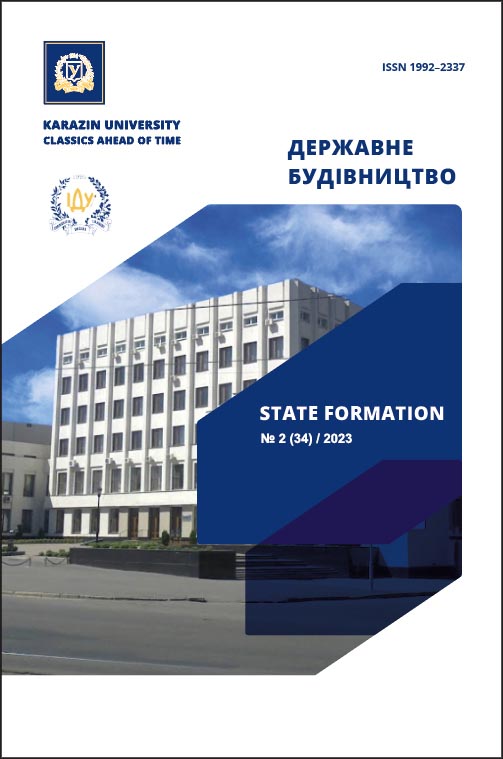Identification of a Passionate Personality as a Subject of the Formation of an Intangible Resource for the Restoration of Communities
Abstract
The paper analyses the process of identification of passionaries as an intangible resource for the recovery of communities. It is emphasized that finding the mechanisms to identify a passionarian has been a major and yet unresolved problem.
The purpose of the study is to interpret the phenomenon of passionary identification, to explicate the concepts of "ways of identification" and "identification methods" in order to activate the passionarity potential in communities. Moreover, for the further growth of scientific knowledge, it is extremely necessary to explore the methods of passionary identification, the reasons for choosing a particular method of identification of a passionarian; the factors that contribute to the actualization of a particular identification mechanism, and the ones that, on the contrary, prevent it.
The methods of personality identification have been analysed, according to the concepts developed by S. Freud, C.G. Jung, K. Horney, E. Fromm, J. Marcia, G. Meade et al.
It has been proved that in the context of constructivist structuralism, identification is considered as an ambivalent path: on the one hand, it is aimed at transforming the world around the individual, and on the other hand, it is aimed at changing the personality itself, conditioned by the social system.
G. Allport's cardinal disposition has been considered and it has been substantiated that its availability suggests the presence of passionary energy in a person.
Based on the analysis of the identification of the main actors of the conflict in accordance with the conflictological paradigm, it has been substantiated that such interaction most often reveals extraordinary personalities, often with passionary dispositions or traits.
It has been shown that there are two ways to identify a passionarian – an internal and external one. The internal way involves a rationally conscious formation of a person's own identity construction. The external method of identity construction is manifested under the influence of extrapersonal factors, while the constructed identity is irrational in most cases.
Downloads
References
Ivanova L. Passion and existence: correlation of empirical indicators. Science and education. No. 5. 2016. 178 – 184.
Psychological encyclopedia. http://surl.li/nrsuj
Tkachuk A., Dacyshyn M. Internal and external resources for community development or Why is lack of money not the primary problem of the community? (educational module). K. ICC "Legal Status". 2016. 152 p.
Franko I. "What is progress?" (1903). Collection of works in fifty volumes. In "Scientific thought". 1986. Volume 45. p. 300-349.
Freud Z. I and it. Philosophy: textbook (from the origins to the present): education. guide.; under the editorship Acad. NAS of Ukraine L.V. Hubersky. K. Knowledge, 2009.
Fromm E. Escape from freedom / transl. from English M. Yakovlev. Kharkiv: Book Club "Family Leisure Club", 2019. 288 p.
Horney K. Neurosis and personal growth. The struggle for self-realization. https://knizhnik.org/karen-horni/nevroz-i-lichnostnyj-rost-borba-za-samorealizacziju
Jung K.G. Psychology of the unconscious. K. Publisher: Center for Educational Literature. 2022. 404 p.
Coser L. The Functions of Social Conflict. New York: The Free Press, 1956. 188 p.
Gordon W. Allport. Personality Trait Theory. Research on Predjudice and Discrimination. https://psychology.fas.harvard.edu/people/gordon-w-allport
Granberg, M. (2019). Objective meaning: The formation of self in Mead and Sohn-Rethel. Acta Sociologica, 62(1), 34-46. https://doi.org/10.1177/0001699317749286
Koen B. Tanghe | Peter Stanley Fosl (Reviewing Editor) (2016) Homo Ludens (1938) and the crisis in the humanities, Cogent Arts & Humanities, 3:1, DOI: 10.1080/23311983.2016.1245087
Nicole Hammons L. James Marcia – Identity Status. https://www.assessmentpsychologyboard.org/edp/pdf/James_Marcia.pdf
Parsons Т. The system of modern societies. Prentice-Hall. 1971. 152 р.

